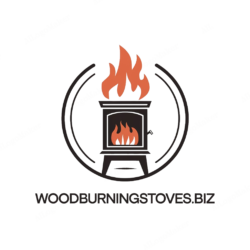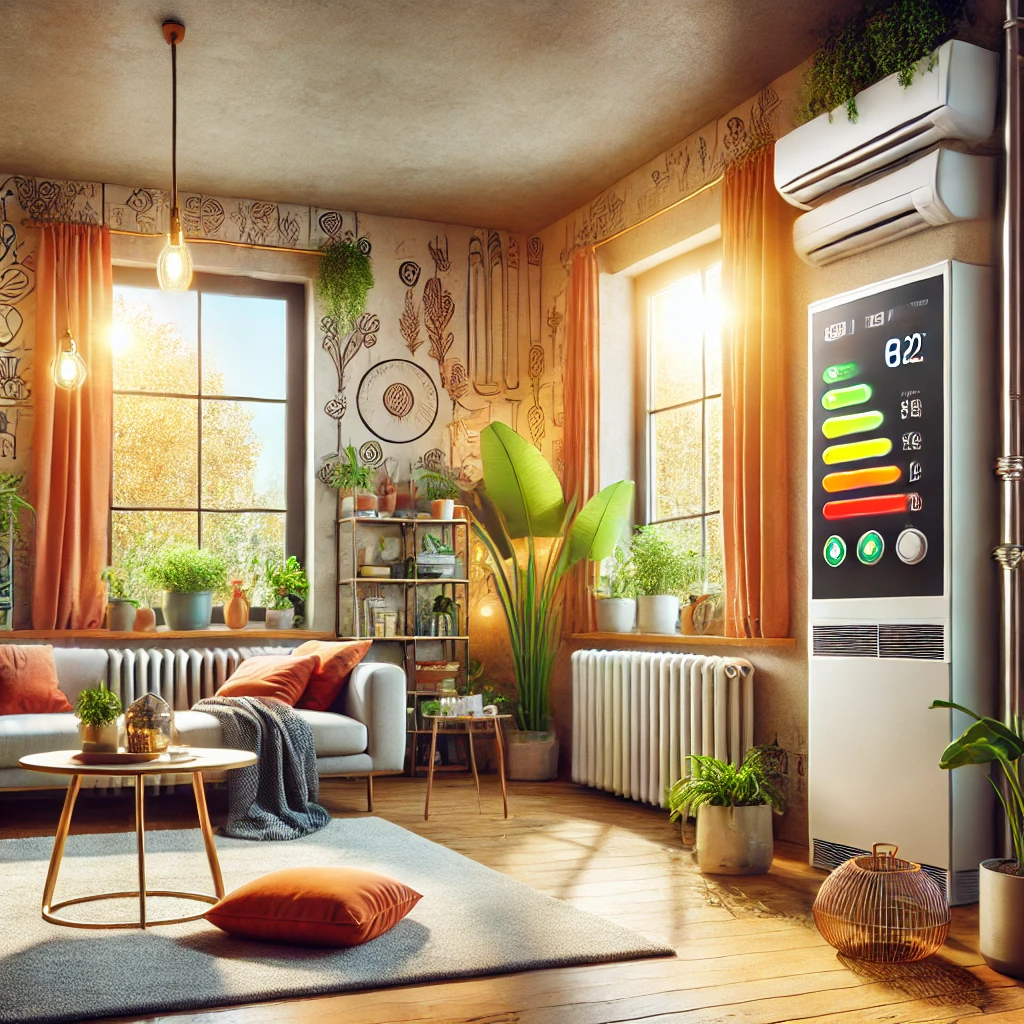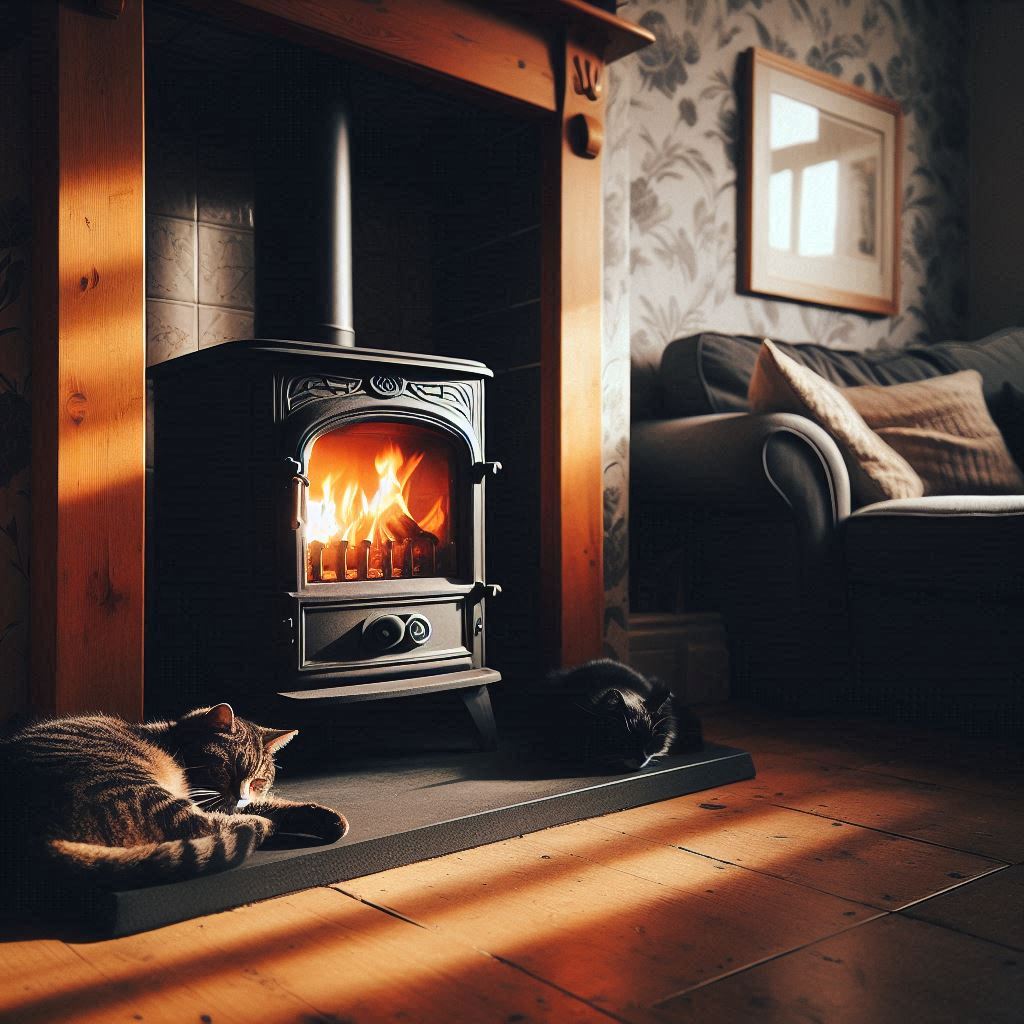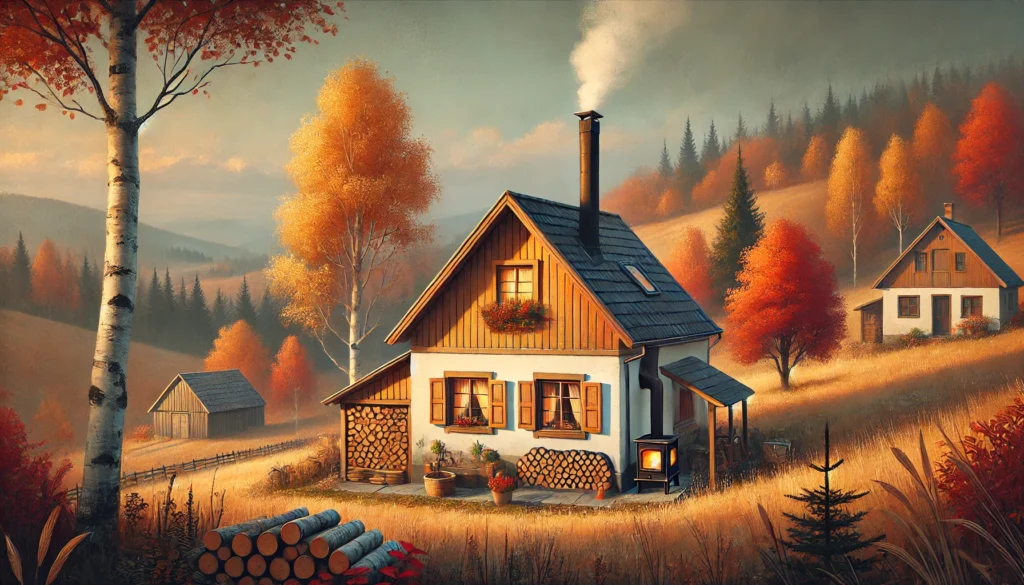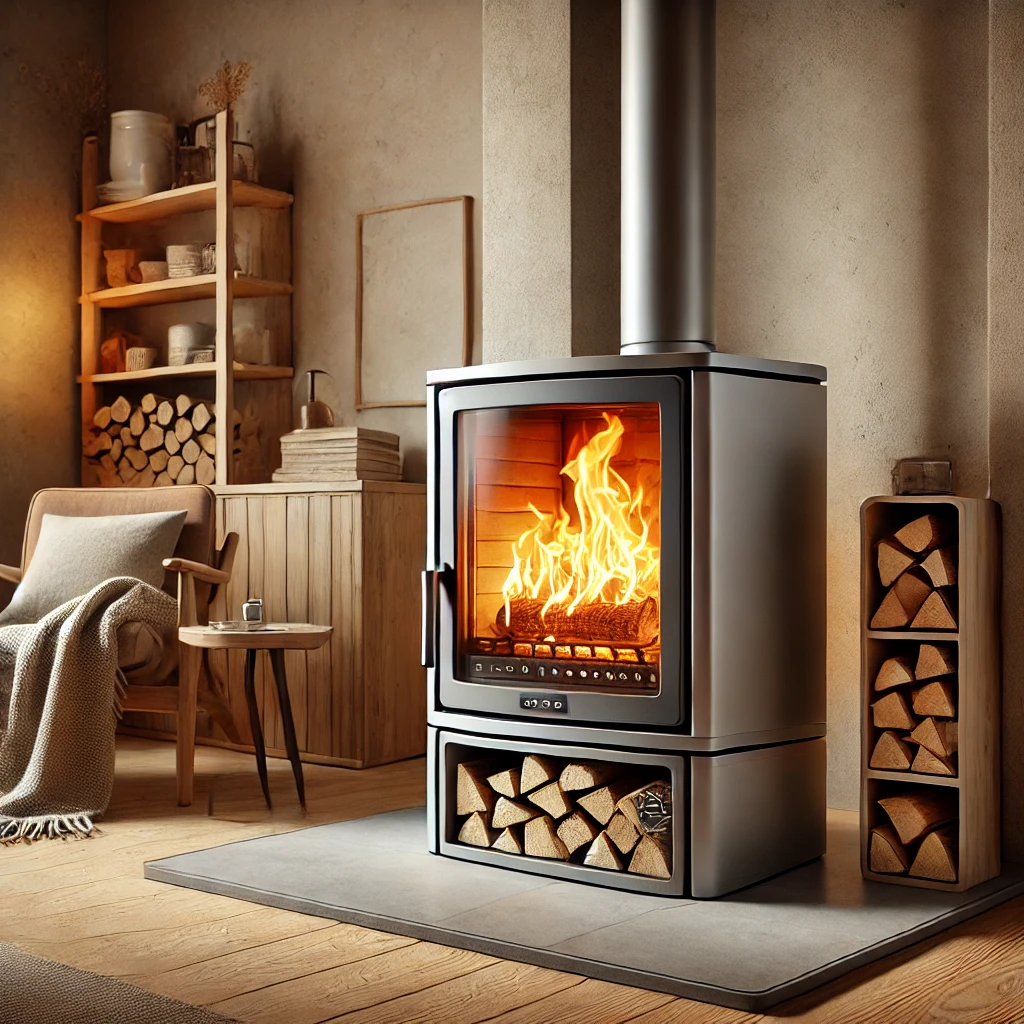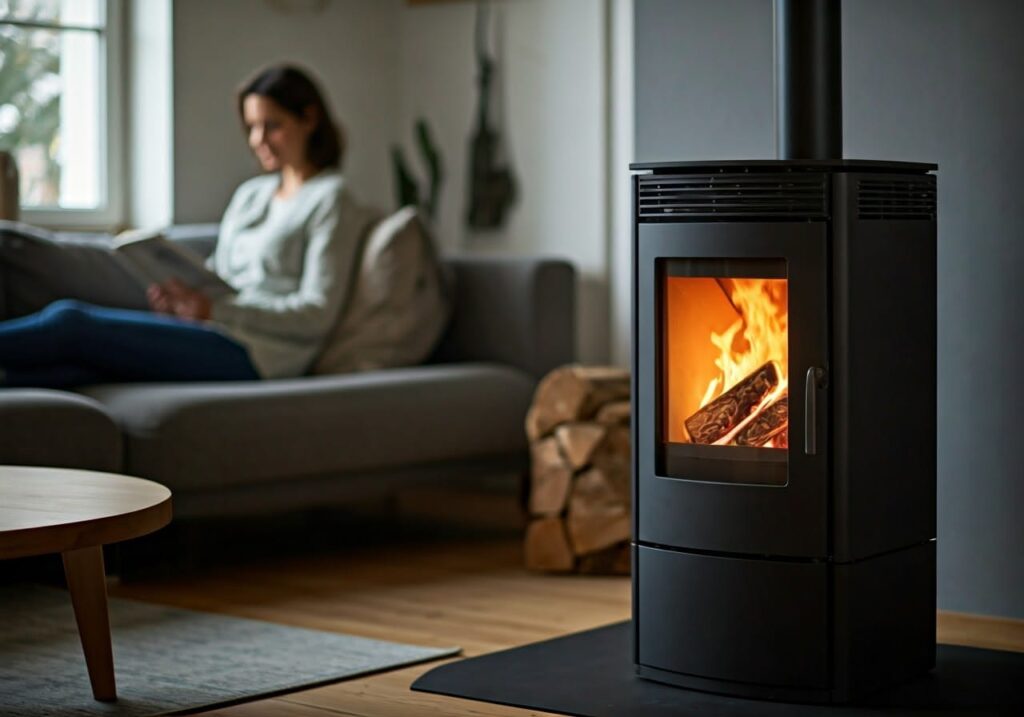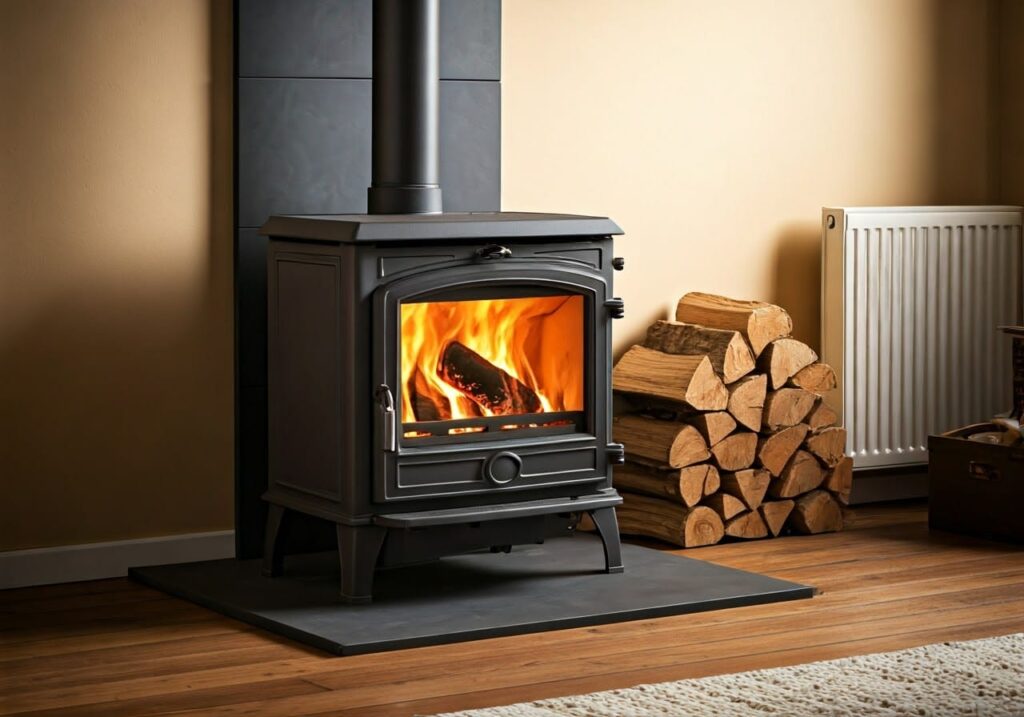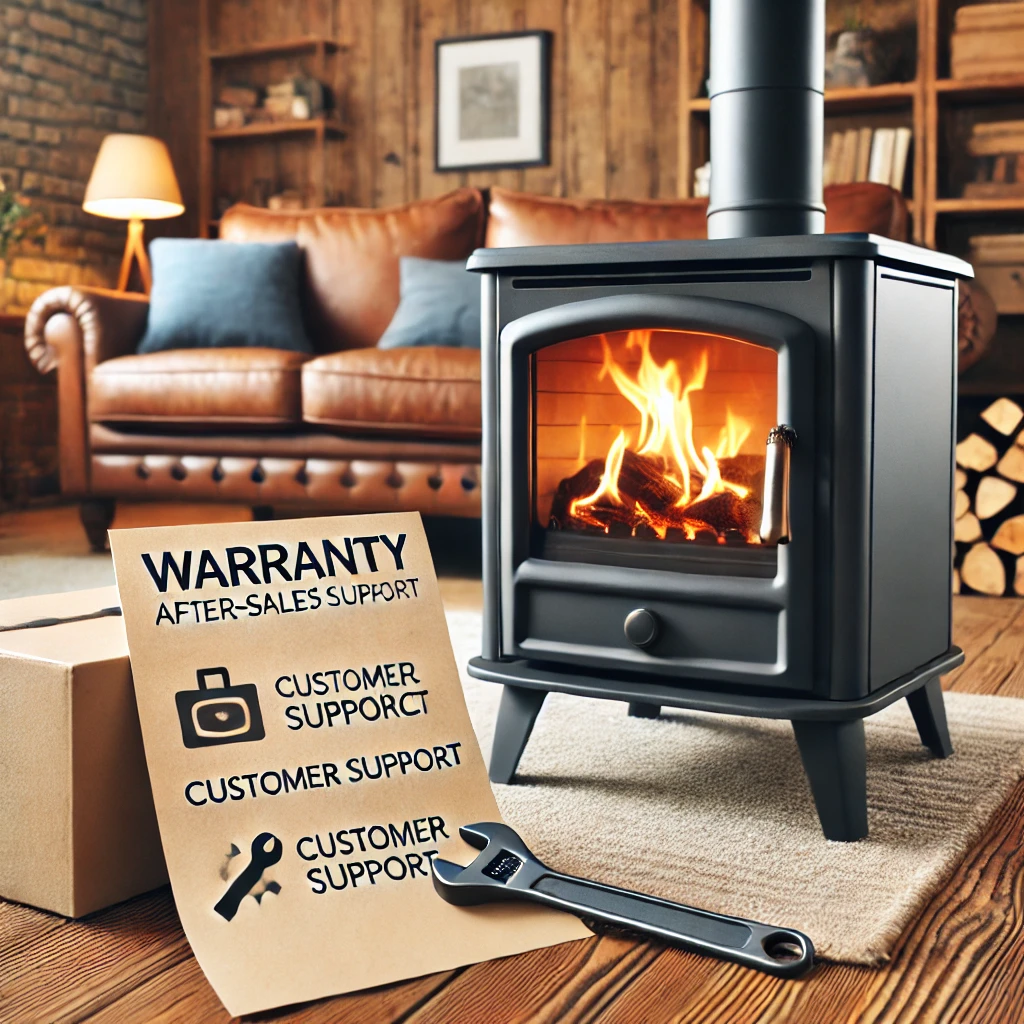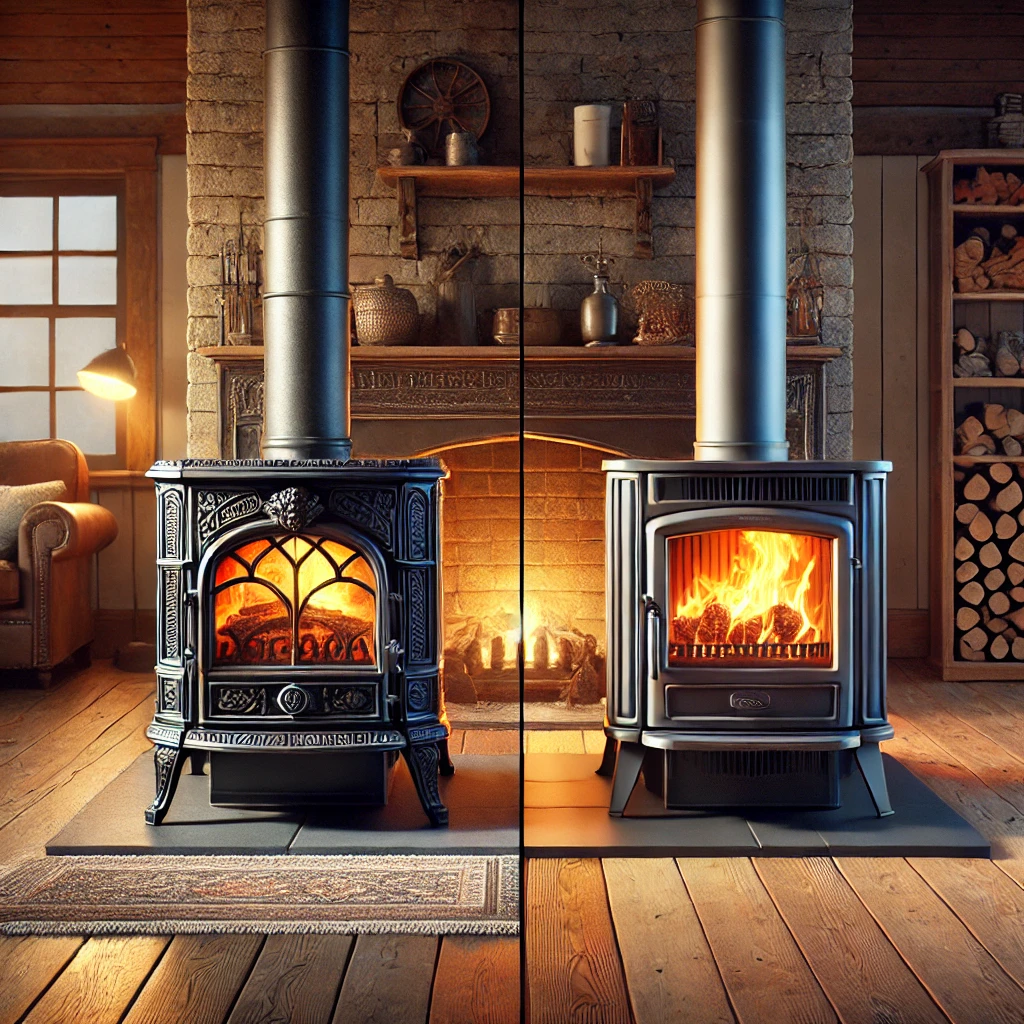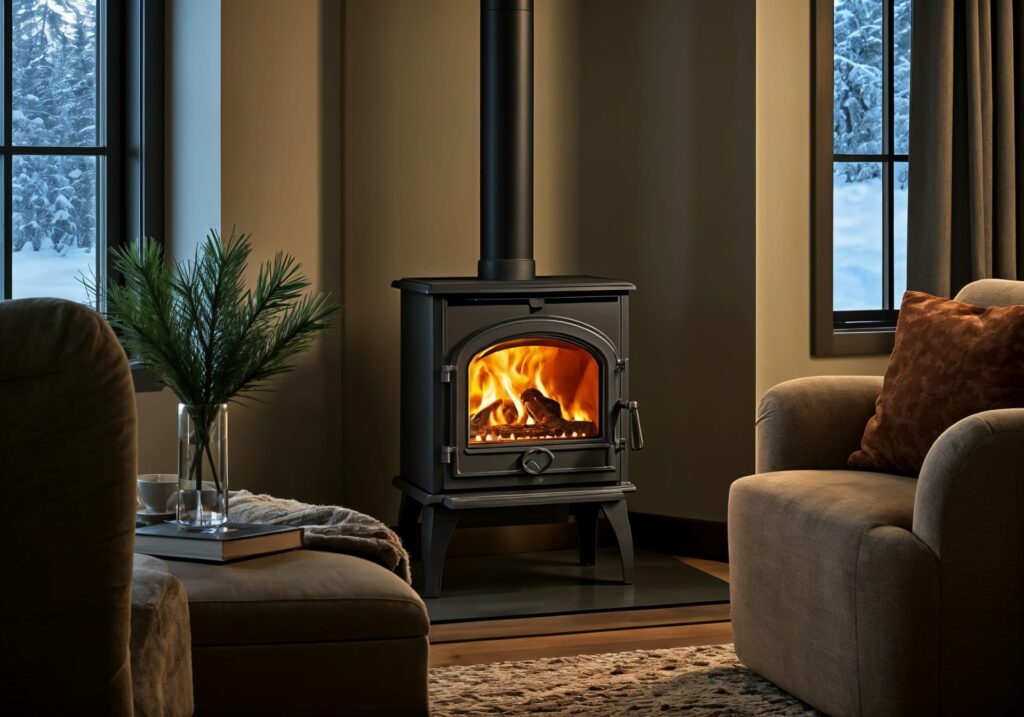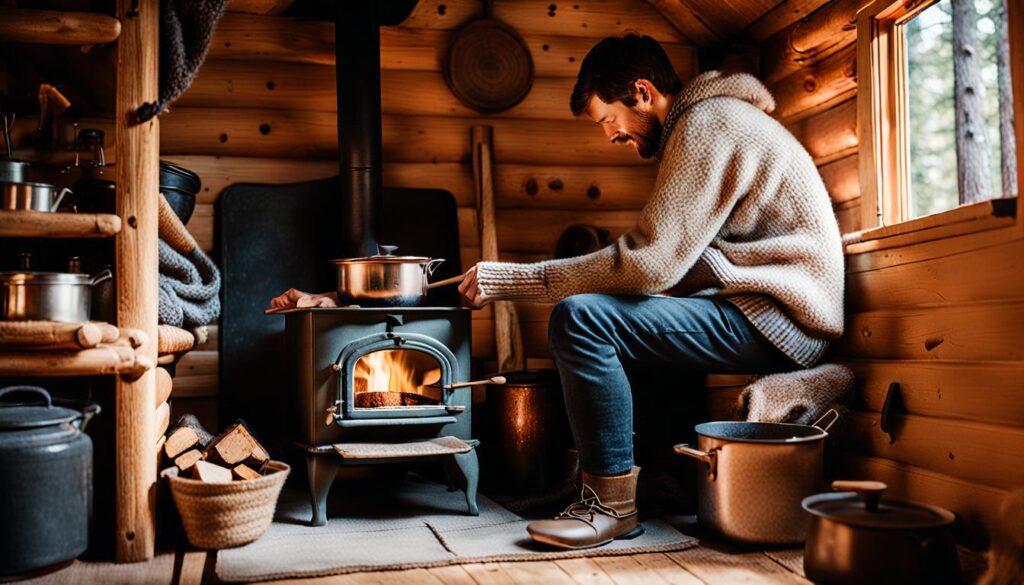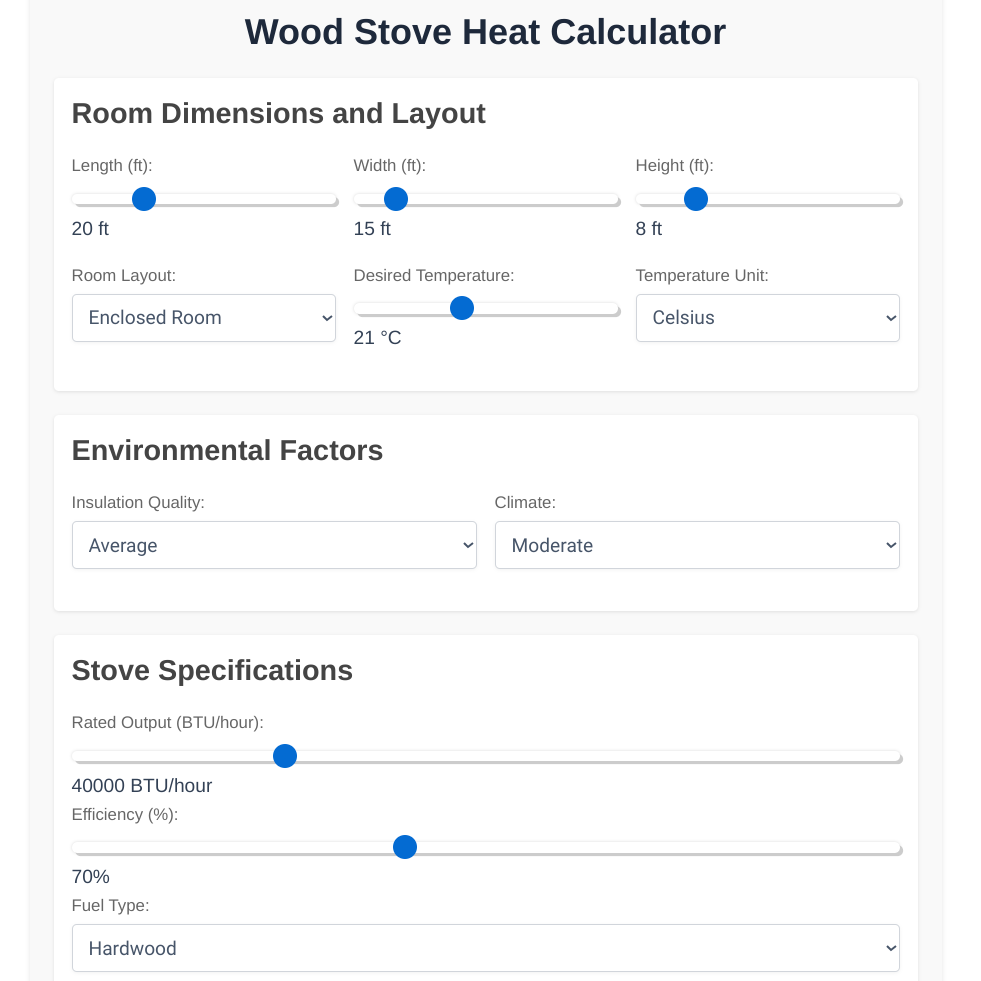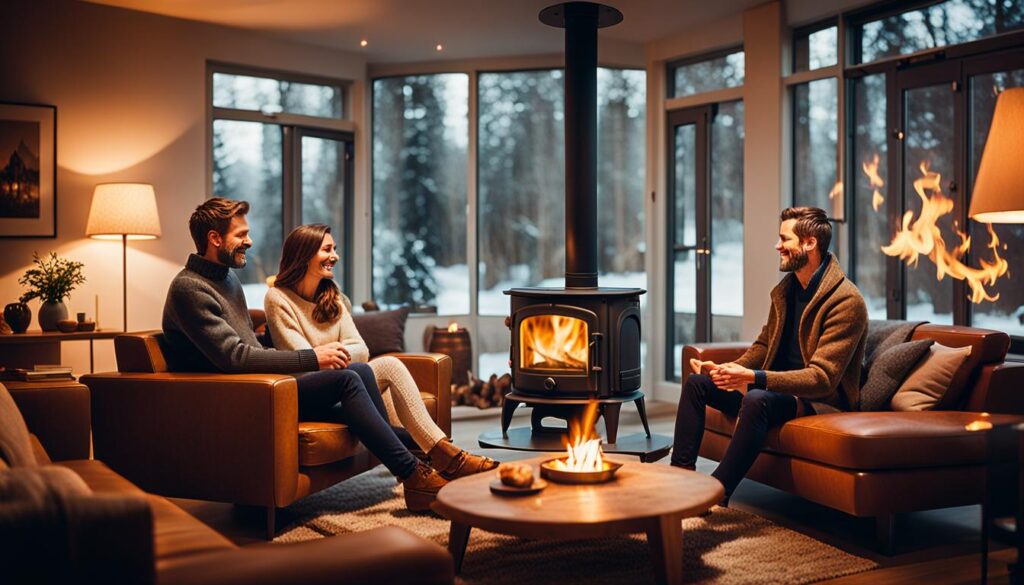
- Introduction to Wood Burning Stoves
- Comparing Wood Stoves to Other Heating Options: Weighing the Advantages
- Benefits of Wood Burning Stoves
- Types of Wood Burning Stoves
- Key Features to Consider
- Sizing Your Wood Stove
- Material Comparison: Cast Iron vs. Steel
- Innovations in Wood Stove Technology: Revolutionizing Home Heating
- Choosing the Right Wood for Your Wood Burning Stove
- Energy Efficiency and Certification: Maximizing Your Wood Stove's Potential
- Safety First: Installation and Maintenance
- Choosing a Wood Burning Stove as a Design Feature
- Conclusion and Next Steps Choosing the Right Stove for Your Home
Introduction to Wood Burning Stoves
Wood burning stoves have been a cornerstone of home heating for centuries, offering a cozy, sustainable, and cost-effective alternative to traditional heating methods. With the latest advancements in technology, modern wood stoves are more efficient, environmentally friendly, and visually appealing than ever. Whether you’re looking to supplement your existing heating system or seeking a primary heat source, choosing the right wood-burning stove for your home can seem daunting. This guide is designed to walk you through the process, ensuring you make an informed decision.
Listen to our Podcast
Comparing Wood Stoves to Other Heating Options: Weighing the Advantages
Making an Informed Decision for Your Home Heating Needs
When considering home heating solutions, it’s essential to evaluate the pros and cons of various options and the costs. Here’s a comprehensive comparison of wood stoves with other popular choices and associated costs:
Heating Options Comparison Table
| Heating Option | Initial Cost | Fuel Cost | Efficiency | Environmental Impact | Aesthetics |
|---|---|---|---|---|---|
| Wood Stoves | $$$ | $$ (seasoned wood) | 70-80% | ** (dependent on wood source) | **** (cozy ambiance) |
| Open Fireplaces | $$ | $$ (wood) | 10-30% | *** (high emissions) | **** (traditional charm) |
| Gas Fireplaces | $$$ | $$$ (gas) | 30-50% | ** (lower emissions) | *** (modern look) |
| Pellet Stoves | $$$ | $$ (pellets) | 80-90% | * (very low emissions) | *** (modern design) |
| Electric Heaters | $ | $$$ (electricity) | 100% (conversion efficiency) | *** (dependent on energy source) | ** (basic design) |
| Central Heating Systems | $$$$ | $$$ (varies by fuel) | 80-90% | *** (dependent on fuel and system) | * (hidden from view) |
Key:
- Cost: $ (low) to $$$$ (high)
- Efficiency: Percentage of energy converted to usable heat
- Environmental Impact: * (low) to *** (high)
- Aesthetics: * (basic) to **** (high visual appeal)
Insights:
- Wood stoves offer a balance of efficiency, cost, and aesthetics, with a significant environmental impact reduction potential when using sustainably sourced wood.
- Pellet stoves excel in efficiency and environmental friendliness but come with a higher initial cost.
- Central heating systems provide comprehensive coverage but may have higher operational costs and varying environmental impacts.
- Electric heaters are cost-effective upfront but may lead to higher long-term energy expenses.
- Open fireplaces and gas fireplaces prioritize aesthetics over efficiency and environmental considerations.
Benefits of Wood Burning Stoves
- Energy Efficiency: Modern stoves can achieve efficiency rates of 70% or higher.
- Sustainable Living: Utilize renewable wood fuel for a lower carbon footprint.
- Cost-Effective: Potentially lower your heating bills, especially in well-insulated homes.
- Ambiance: The unmistakable warmth and glow of a wood fire.
Types of Wood Burning Stoves
| Type | Description | Suitable For |
|---|---|---|
| Insert Stoves | Designed to fit into existing fireplaces. | Homes with a fireplace seeking increased efficiency. |
| Freestanding Stoves | Standalone units, often more efficient than inserts. | New installations or open-plan spaces. |
| Pellet Stoves | Burn compressed wood pellets for high efficiency. | Those prioritizing minimal environmental impact. |
| Catalytic Stoves | Use a catalyst to reduce emissions and increase efficiency. | Homes in areas with strict emission regulations. |
Key Features to Consider
- Efficiency Rating: Look for high percentages for better performance.
- Emissions: Check for compliance with local regulations.
- Fuel Type: Decide between logs, pellets, or both (for some models).
- Space Heating Capacity: Ensure it matches your home’s heating needs.
- Safety Features: Overheat protection, child safety locks, etc.
- Aesthetic Appeal: Choose a design that complements your home’s décor.
- Modern Features: Modern stoves offer a variety of features and benefits
- How busy: Work factors can influence choice and the time available to maintain a wood burning stove
- Sales Support: Warranties and after-sales support can be important for newbies
Sizing Your Wood Stove
Choose a stove that meets your heating requirements. What is the point of buying stove that outputs too much heat? For example, if you have a small cabin, size of stove may be an issue.
| Home Size (sq. ft.) | Recommended Stove Output (BTU) |
|---|---|
| Less than 1,000 | 8,000 – 20,000 BTU |
| 1,000 – 2,000 | 20,000 – 35,000 BTU |
| 2,000 – 3,000 | 35,000 – 50,000 BTU |
| More than 3,000 | 50,000 BTU or higher |
Detailed Sizing Example:
- Scenario: A well-insulated, 1,800 sq. ft. home in a moderate climate, with average temperatures ranging from 35°F to 50°F (2°C to 10°C) in winter.
- Heating Needs:
- Desired Indoor Temperature: 68°F (20°C)
- Insulation Quality: High (reduces heat loss)
- Window Quality: Double-glazed (minimizes heat escape)
- Recommended Stove Size: A stove with an output of 30,000 BTU would be suitable. This size ensures the home remains warm during colder periods without overheating during milder winter days.
- Example Stove Model: Consider a model like the Jotul F 300, known for its efficiency and moderate output, suitable for homes of this size and climate.
Material Comparison: Cast Iron vs. Steel
Modern stoves offer a choice of construction materials:
| Material | Pros | Cons |
|---|---|---|
| Cast Iron | Durable, excellent heat retention, traditional look. | Heavier, slower to heat up. |
| Steel | Lighter, faster heat up times, often more affordable. | Less durable, lower heat retention. |
Innovations in Wood Stove Technology: Revolutionizing Home Heating
Embracing the Future of Efficient, Sustainable, and Connected Wood Stoves
The wood stove industry has witnessed significant transformations in recent years, driven by the pursuit of enhanced efficiency, reduced emissions, and seamless user experiences. Here are the latest groundbreaking innovations:
1. Automated Air Control Systems
- Precision Combustion: Advanced sensors and automated dampers optimize air intake for perfect burn conditions.
- Increased Efficiency: Up to 15% more efficient than manual air control systems.
2. Catalytic Converters and Secondary Burn Technology
- Emission Reduction: Catalytic converters minimize pollutants, while secondary burn technology ensures complete fuel combustion.
- Cleaner Burn: Meets stringent environmental standards, including EPA Phase 2 guidelines.
3. Hybrid Wood/Pellet Stoves
- Fuel Flexibility: Seamlessly switch between wood logs and pellets, adapting to your needs and fuel availability.
- Convenience: Enjoy the best of both worlds in a single, space-saving unit.
4. Integration with Smart Home Systems
- Remote Monitoring and Control: Adjust stove settings, monitor temperature, and receive maintenance alerts via your smartphone.
- Enhanced Safety: Automated alerts for unusual stove behavior or maintenance needs.
5. Improved Insulation and Heat Retention Designs
- Advanced Materials: High-performance insulation minimizes heat loss, ensuring more warmth for less fuel.
- Innovative Designs: Enhanced heat retention systems, such as thermal mass storage, for prolonged warmth after the fire has gone out.
Choosing the Right Wood for Your Wood Burning Stove
The Heart of Efficient and Safe Wood Stove Operation
Proper fuel selection is paramount for optimal wood stove performance, safety, and environmental sustainability. The right wood ensures efficient combustion, minimizes emissions, and reduces maintenance.
Hardwoods vs. Softwoods
- Hardwoods (e.g., Oak, Ash, Beech): Dense, burn slower, produce more heat, and less smoke. Ideal for wood stoves.
- Softwoods (e.g., Pine, Fir, Spruce): Less dense, burn quicker, produce less heat, and more creosote. Not recommended due to increased risk of chimney fires.
Optimal Moisture Content and Seasoning Time
- Moisture Content: Aim for 20% or lower. High moisture leads to inefficient burning and increased emissions.
- Seasoning Time: Allow wood to season for at least 6 months to 1 year. This reduces moisture content, ensuring better burn quality.
Storage Requirements
- Dry, Well-Ventilated Area: Store wood off the ground, covered, and protected from the elements.
- First-In, First-Out: Ensure older wood is burned before newer additions to maintain quality.
Alternative Fuel Options
- Compressed Logs and Briquettes: Made from waste wood, these burn efficiently, produce less ash, and are a sustainable alternative. Look for products with minimal additives.
The Importance of Woodsure Ready to Burn Certification
- Guaranteed Quality: This UK-based certification ensures wood fuels meet strict moisture content standards (≤20%).
- Efficient Combustion: Ready to Burn wood minimizes emissions and optimizes stove performance.
- Reduced Maintenance: Lower risk of chimney fires and less soot buildup.
Choose Wisely, Burn Efficiently:
Selecting the right wood, whether traditional hardwoods or innovative alternatives, is crucial for a safe, efficient, and environmentally friendly wood burning stove experience. Always opt for Woodsure Ready to Burn certified fuels when possible.
Energy Efficiency and Certification: Maximizing Your Wood Stove’s Potential
Unlocking Optimal Performance and Environmental Benefits
In the pursuit of a warmer, more sustainable home, energy efficiency plays a vital role in wood stove selection. Two key benchmarks guide your choice: Energy Star Certification and high efficiency ratings.
Energy Star Certification: A Mark of Excellence
- Stringent Standards: Meets U.S. Environmental Protection Agency (EPA) guidelines for energy efficiency and emissions.
- Verified Performance: Third-party tested to ensure certified stoves deliver on promised efficiency and environmental claims.
- Incentives: May qualify for rebates, tax credits, or other incentives, offsetting the cost of your investment.
High Efficiency Ratings: The Path to Optimal Performance
- Efficiency Rating Threshold: Aim for stoves with efficiency ratings above 70% for:
- Maximized Heat Output: More warmth from less fuel.
- Reduced Emissions: Minimized environmental impact.
- Lower Operating Costs: Savings on your energy bills.
- Understanding Efficiency Ratings:
- AFUE (Annual Fuel Utilization Efficiency): Measures seasonal efficiency.
- HHV (Higher Heating Value): Reflects stove efficiency under ideal conditions.
Certified Efficiency for a Clear Conscience:
Prioritize Energy Star Certification and high efficiency ratings (above 70%) to ensure your wood stove selection aligns with both your comfort needs and environmental values.
Safety First: Installation and Maintenance
- Professional Installation: Ensure safety and efficiency.
- Regular Maintenance: Cleanliness affects performance and safety.
Choosing a Wood Burning Stove as a Design Feature
Selecting a wood burning stove as a design element? Consider:
- Style: Traditional or modern, matching your home’s aesthetic
- Size: Proportional to the room, with necessary clearance
- Visual Focal Point: Enhance with a hearth, surround, and strategic lighting
- Integration: Match or contrast with existing features, ensuring good flow
Popular Trends:
- Industrial Chic (exposed brick, metal accents)
- Rustic Charm (natural stone, wooden beams)
- Minimalist Elegance (sleek design, monochromatic scheme)
Choose thoughtfully to create a warm, beautiful centerpiece in your home.
Conclusion and Next Steps Choosing the Right Stove for Your Home
Choosing the right wood burning stove for your home heating needs involves considering efficiency, size, material, and safety. By following this guide, you’ll be well on your way to finding the perfect stove to warm your home and heart.
Next Steps:
- Assess Your Heating Needs: Reflect on your home’s size, insulation, and current heating setup.
- Research Local Regulations: Ensure your choice complies with emission standards in your area.
- Explore Our Supporting Posts: Dive deeper into topics of interest for a more informed decision.
Discover more about Choosing a Stove for your Home
Eco-Friendly Heating with Modern Wood Stoves
As the world grapples with rising energy costs and the urgent need to mitigate climate change, homeowners are increasingly seeking eco-friendly heating solutions. Modern wood…
Cozy Ambiance Guaranteed: Expert Wood Stove Decorating Ideas for a Warm Focal Point
Unlocking the Secrets of Your Stove’s StyleBefore diving into the world of wood stove decorating, it’s essential to understand the unique design language of your…
Budget Breakdown: The True Cost of Owning and Operating a Wood Stove
As the quest for cozy, cost-effective, and environmentally friendly heating solutions intensifies, wood stoves have emerged as a popular choice for many homeowners. However, beyond…
Warmth Evolved: A Comprehensive Guide to Modern Wood Stove Features
As the world shifts towards more sustainable and environmentally friendly heating solutions, modern wood stoves have evolved to offer not just warmth, but also efficiency,…
The Ease of Use: Comparing Wood Burning Stove Types for Busy Homeowners
Find the Best Stove for Busy Homeowners and Warm Up to Convenience As a busy homeowner, juggling multiple responsibilities while maintaining a cozy home can be quite…
Safety First: Wood Burning Stove Safety Features to Look For
As the temperatures drop, a wood burning stove can be a cozy and warm addition to any home. However, with the warmth and comfort comes…
Wood Burning Stove Warranties and After-Sales Support: What to Expect
As you embark on the journey to find the perfect wood burning stove for your home, it’s essential to look beyond the initial purchase price…
Comparing Cast Iron vs. Steel Wood Stoves: Which Is Better?
If you’re trying to decide between cast iron and steel wood stoves, the choice might seem overwhelming. Both types have their pros and cons, so…
What Size Wood Stove Do You Need for Your Home?
As the world embraces a more environmentally conscious lifestyle, wood stoves have become an increasingly popular choice for heating homes. But, selecting the right wood…
How to Choose the Best Wood Stove for a Small Cabin
Living in a small cabin means every decision counts, especially when it comes to heating. A well-chosen wood stove can make your space cozy and…
Choosing the Right Stove for Your Home
Introduction to Wood Burning Stoves Wood burning stoves have been a cornerstone of home heating for centuries, offering a cozy, sustainable, and cost-effective alternative to…
